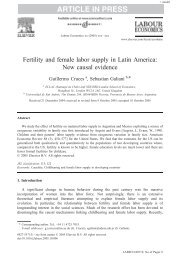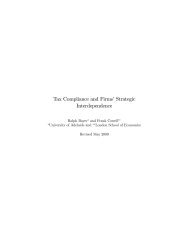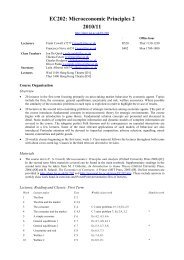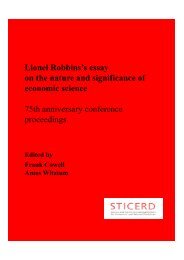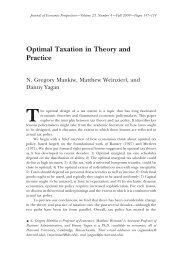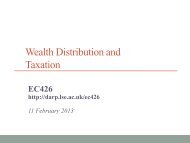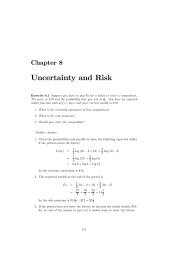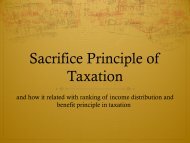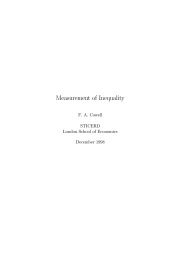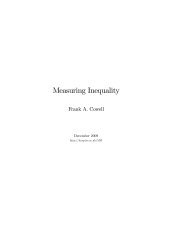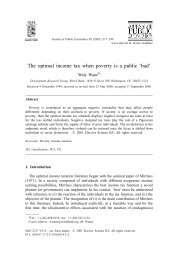Create successful ePaper yourself
Turn your PDF publications into a flip-book with our unique Google optimized e-Paper software.
24 CHAPTER 2. CHARTING INEQUALITYrange, which we de…ne simply as the distance CD in Figure 2.1 or:R = y max y min ;where y max and y min are, respectively the maximum and minimum values ofincome in the parade (we may, of course standardise by considering R=y min orR=y). Plato apparently had this concept in mind when he made the followingjudgement:We maintain that if a state is to avoid the greatest plague of all –I mean civil war, though civil disintegration would be a better term– extreme poverty and wealth must not be allowed to arise in anysection of the citizen-body, because both lead to both these disasters.That is why the legislator must now announce the acceptable limitsof wealth and poverty. The lower limit of poverty must be the valueof the holding. The legislator will use the holding as his unit ofmeasure and allow a man to possess twice, thrice, and up to fourtimes its value. –The Laws, 745.The problems with the range are evident. Although it might be satisfactoryin a small closed society where everyone’s income is known fairly certainly, itis clearly unsuited to large, heterogeneous societies where the “minimum” and“maximum” incomes can at best only be guessed. The measure will be highlysensitive to the guesses or estimates of these two extreme values. In practice onemight try to get around the problem by using a related concept that is morerobust: take the gap between the income of the person who appears exactlyat, say, the end of the …rst three minutes in the Parade, and that of the personexactly at the 57th minute (the bottom 5% and the top 5% of the line of people)or the income gap between the people at the 6th and 54th minute (the bottom10% and the top 10% of the line of people). However, even if we did that there isa more compelling reason for having doubts about the usefulness of R. Supposewe can wave a wand and bring about a society where the person at position Oand the person at position C are left at the same height, but where everyone elsein between was levelled to some equal, intermediate height. We would probablyagree that inequality had been reduced, though not eliminated. But accordingto R it is just the same!You might be wondering whether the problem with R arises because itignores much of the information about the distribution (it focuses just on acouple of extreme incomes). Unfortunately we shall …nd a similar criticism insubtle form attached to the second inequality measure that we can read o¤ theParade diagram, one that uses explicitly the income values of all the individuals.This is the relative mean deviation, which is de…ned as the average absolutedistance of everyone’s income from the mean, expressed as a proportion of themean. Take a look at the shaded portions in Figure 2.1. These portions, whichare necessarily of equal size, constitute the area between the Parade curve itselfand the horizontal line representing mean income. In some sense, the larger isthis area, the greater is inequality. (Try drawing the Parade with more giants



